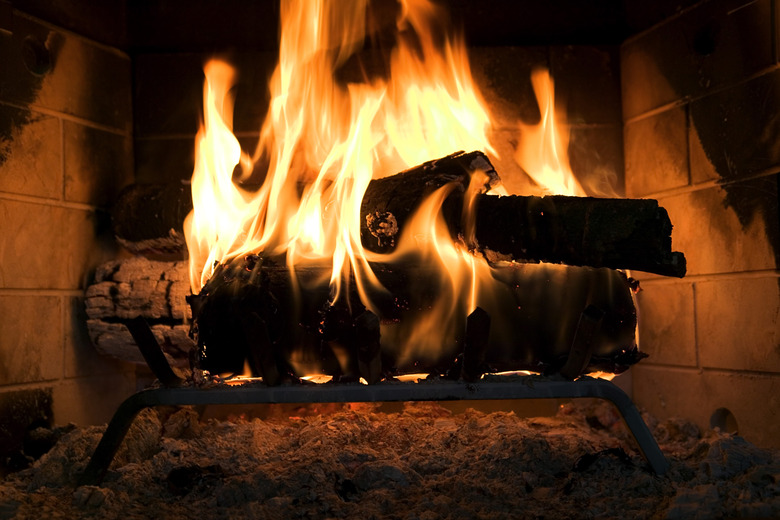How To Keep Smoke From Coming Into The House While Burning Wood
Whether you're burning wood in a fireplace or woodstove, smoke coming into the house creates dirty air and dust in your home. The most common source of smoke from a woodstove occurs when the door is opened to add wood. The puff of smoke from an airtight stove can be solved with air regulation. Smoke from a fireplace with glass doors can also puff when the doors are opened.
Slight smokiness from either appliance is often caused by incorrect chimney installation. Smoke that enters through windows or doors can also be caused by chimney height.
1. Keep It Clean
Have your fireplace inspected at least once per year and handle fireplace cleaning as needed. There is real danger of fire that could damage or destroy your home if your chimney needs cleaning. Leaves, animal nests, creosote buildup and other obstructions keep smoke from exiting and can cause a fire in the chimney. Consult an expert if you have any doubts about the safety of your fireplace, woodstove or chimney.
2. Use the Right Wood
Burn dry, well-seasoned, untreated wood. Other types of wood burn differently and can cause more smoke and release potentially hazardous pollutants inside your home.
3. Consider the Grate Placement
Place the fireplace grate so it has a few inches on all sides within the firebox. Placing the grate toward the front can cause it to produce smoke that comes into your home.
4. Test the Draft
Test the draft of your chimney in the cold woodstove or fireplace by lighting the newspaper and holding it high in the fireplace or woodstove. If the draft is good the paper will burn strongly; you might hear the stovepipe and chimney roar as they warm up. If the chimney doesn't draw the hot air, you may have a blockage in the chimney that you'll have to clear once the chimney has cooled.
5. Get an Upward Draft
Get a good upward draft before opening the woodstove or fireplace. Because woodstoves are so efficient and airtight, it's necessary to open the air intake a few minutes before opening the door to avoid that puff of smoke from entering the house. Open the air intake on the fireplace doors to get the draft pulling the smoke up the chimney and out of the house.
6. Check the Chimney Height
Check your chimney height if you're still having problems. The chimney must be a minimum of ten to twelve feet high. It should project out of the roof at least 3 feet and be 2 feet taller than anything, like trees or roof slope, within 10 feet of it.
7. Consider the Location
Check the location of the fireplace or woodstove. If the appliance is in the same room as a cold air return for the furnace, the operating HVAC system may pull the smoke into the room through the negative air pressure.
8. Open a Window
Crack open a window if the house is very tight. The woodstove or fireplace needs air to burn; if your house doesn't allow fresh air in through some natural leaks or opening doors, you'll have reverse air flow that draws smoke into your room.
9. Remove Old Ashes
Scoop out the cooled ashes after you're done burning wood. Leaving the old ashes in your firebox can cause smoke the next time you start a fire.
10. Check for Leaks
Check for drafty windows and doors if the smoke is seeping in from outside the house. If the smoke is drawing up the chimney, but sinks down around the house you can have smoke coming into the house. This happens at elevations above 4,000 feet where inversions can also occur in the mountains. If this is the case, you may have to reconsider burning wood.
